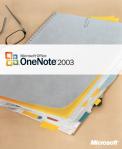This is a re-post of my original article, modified to reflect clarifications that I received from the author, which were very much appreciated. In fact the author spent some time developing a response which he kindly sent to me rather than posting as a comment. However having read the comments, I still thought that a slightly modified article had something useful to say so I made these updates and reposted.
———————————————————–
 Nic just blogged on an interesting article published by IBM titled “Opening minds: Cultural change with the introduction of open-source collaboration methods”.
Nic just blogged on an interesting article published by IBM titled “Opening minds: Cultural change with the introduction of open-source collaboration methods”.
It’s message centred around the concept that there are two cultural models, the Traditional Approach and the Open-Source Approach. I mistakenly thought that the traditional approach was described by the classic book “The Mythical man Month”, the Open Source approach by Linus. However the author has pointed out to me that only certain elements of the approach described in the Mythical Man Month are actualy being referred to in the article. The following table from the article describes the key differences:
|
Traditional Approach |
Open-Source Approach |
|
Brooks’ Law |
Linus’ Law |
|
Hierarchy |
Network |
|
Experts |
Peers |
|
Teams |
Communities |
|
Cathedral |
Bazaar |
|
Perfection |
Improvement |
|
Construction |
Evolution |
…
 I am desperately waiting to me able to blog at work! I find it very frustratng that most of the technical blogs posts I want to post I am unable to, because they can only be released under NDA and even more frustrating that other people at work can not work with me in the collaborative, community building fashion that blogs enable. We use Notes at work for email, document sharing, discussions etc and are deploying WebSphere as our collaboration portal, so the news that WorkPlace will include blog support is encouraging. It seems very primitive at this stage, but its a start.
I am desperately waiting to me able to blog at work! I find it very frustratng that most of the technical blogs posts I want to post I am unable to, because they can only be released under NDA and even more frustrating that other people at work can not work with me in the collaborative, community building fashion that blogs enable. We use Notes at work for email, document sharing, discussions etc and are deploying WebSphere as our collaboration portal, so the news that WorkPlace will include blog support is encouraging. It seems very primitive at this stage, but its a start.


 I like the GTD methodology, although I don’t follow it myself,
I like the GTD methodology, although I don’t follow it myself, 
 n’t there always a problem – that somewhere in the Skype Out chain the DTMF tones get screwed up and this makes it almost impossible to actually get connected to the call, ie entering your PIN etc. Other people
n’t there always a problem – that somewhere in the Skype Out chain the DTMF tones get screwed up and this makes it almost impossible to actually get connected to the call, ie entering your PIN etc. Other people 
 Michael Sampson writes a great blog on collaboration, its really a daily must check feed on new announcements in the industry and saves me a lot of time. Sometimes he provides some great content himself, such as his
Michael Sampson writes a great blog on collaboration, its really a daily must check feed on new announcements in the industry and saves me a lot of time. Sometimes he provides some great content himself, such as his 

 There is a recent trend for software to auto-update, and if you are logged in as administrator then it works pretty well, and hopefully with Longhorn and
There is a recent trend for software to auto-update, and if you are logged in as administrator then it works pretty well, and hopefully with Longhorn and 
 I am still on a journey of discovery to try and “find what I love doing”, I am fairly content in my work, find it interesting and challenging, but I don’t feel I make a difference, at home I spend most of the time with my family – which is great – but very internal focused. I would like both work and home life to change over time to be more community centred and to feel that I am giving something back to the world and that I live in a more natural and sustainable way. My relatively poor health is currently the excuse I hide behind that stops me taking the risk associated with change.
I am still on a journey of discovery to try and “find what I love doing”, I am fairly content in my work, find it interesting and challenging, but I don’t feel I make a difference, at home I spend most of the time with my family – which is great – but very internal focused. I would like both work and home life to change over time to be more community centred and to feel that I am giving something back to the world and that I live in a more natural and sustainable way. My relatively poor health is currently the excuse I hide behind that stops me taking the risk associated with change.
 I recently listened to a lecture by Thomas Malone on the “New world of work”, I enjoyed the lecture although the material in it was not too surprising. That said the implications on IT are considerable as the old concept of a single infrastructure for all of an enterprises employees starts to collapse as those employees become a fragmented mix of oursourced, contractors, suppliers, small isolated teams in internal markets etc. Tom describes 4 models for the future of the distributed workplace:
I recently listened to a lecture by Thomas Malone on the “New world of work”, I enjoyed the lecture although the material in it was not too surprising. That said the implications on IT are considerable as the old concept of a single infrastructure for all of an enterprises employees starts to collapse as those employees become a fragmented mix of oursourced, contractors, suppliers, small isolated teams in internal markets etc. Tom describes 4 models for the future of the distributed workplace: